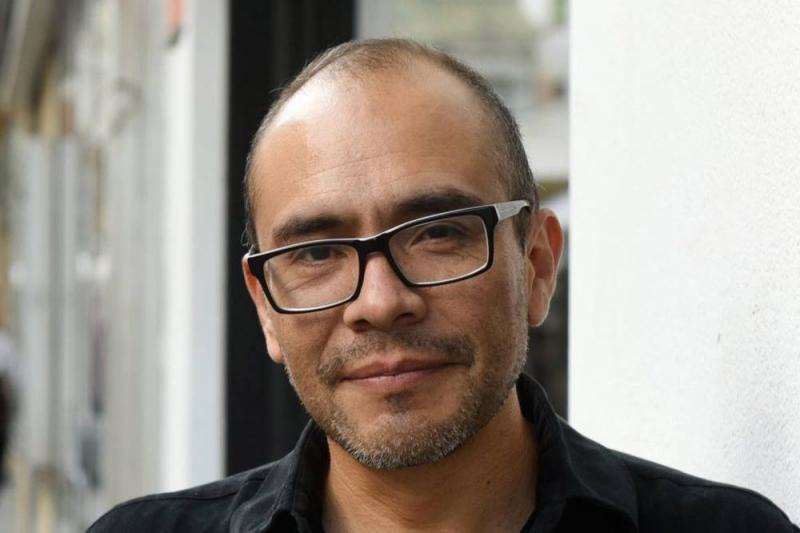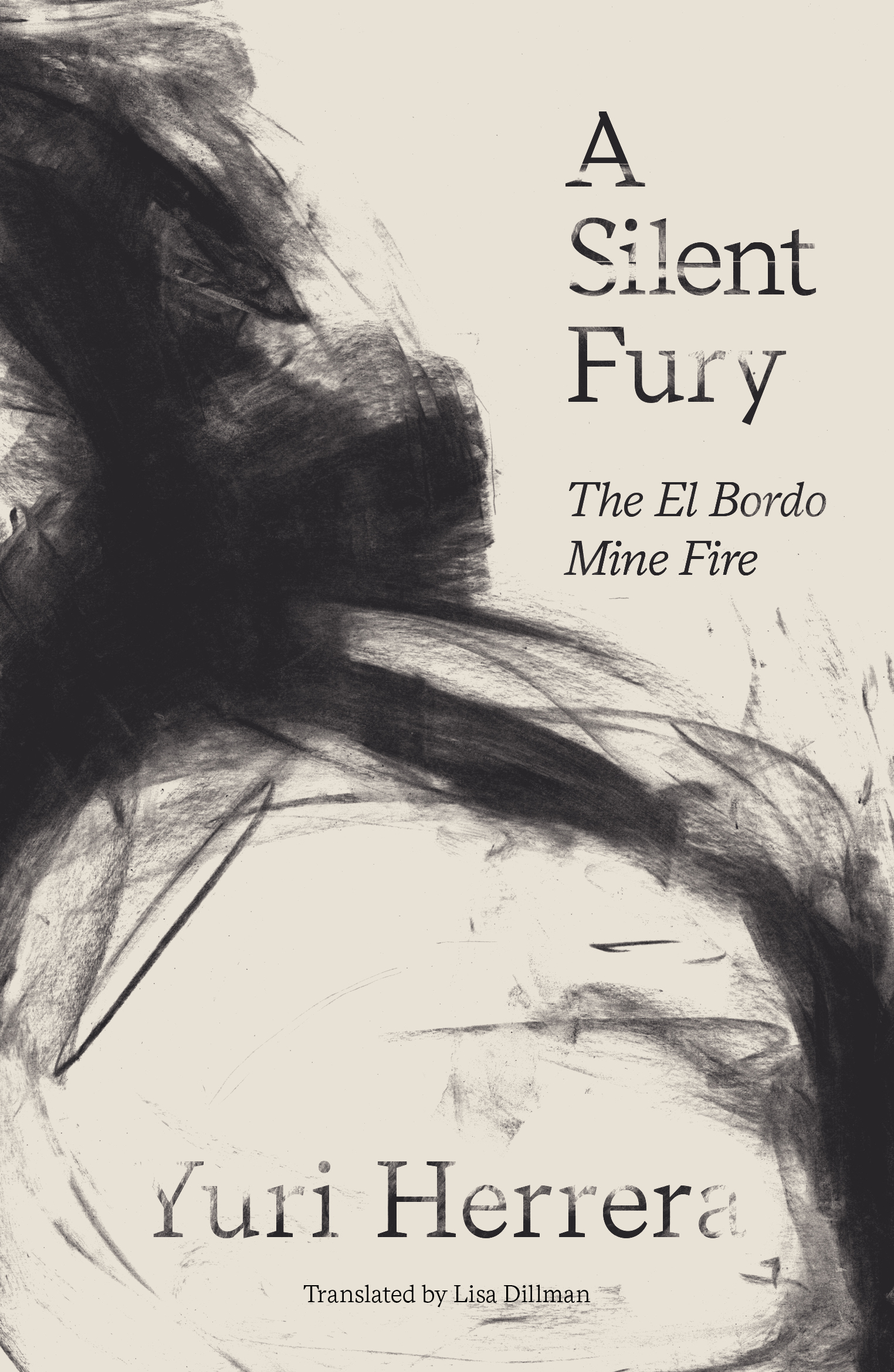Yuri Herrera: A Silent Fury review – the fire last time | reviews, news & interviews
Yuri Herrera: A Silent Fury review – the fire last time
Yuri Herrera: A Silent Fury review – the fire last time
Lessons for today in a Mexican tale of corporate murder and deceit

History, as protestors around the world currently insist, can be the art of forgetting – and erasure – as much as of memory. Although it explores a single incident from a century ago, Yuri Herrera’s brief, forensic but quietly impassioned account of a Mexican mining disaster may speak directly to the movements that now seek to reclaim a buried past from beneath official records.
In contrast with these works, A Silent Fury reads, mostly, like a sober non-fiction study of the tragedy that struck Herrera’s home city of Pachuca on 10 March 1920. Early that morning, an underground fire at the American-owned El Bordo metals mine led to 87 deaths by gas asphyxiation, with the victims’ bodies then burnt and disfigured beyond recognition. Seven miners trapped in one shaft survived in an air pocket for six days. Herrara investigates the formal records and reports of the disaster, reading between the lines to tease out what they omit as well as what they say. He draws too on oral traditions, and the indelible traces this calamity left in the stories of local people. A Silent Fury asks, in its discreet but compelling voice, who gets to make history – especially the history of suffering and loss. It considers how the exclusions and oversights in formal accounts can be corrected by other sources, other memories. With its interrogation of historical documents, its analysis of press reports and legal depositions, this short book does at intervals read like a scholarly paper – in fact, some of its material derives from Herrera’s PhD research. But, beyond this dry objectivity, we occasionally glimpse the novelist’s sensibility at work. He hints at the terrifying ordeal of the survivors, and the grief of the womenfolk gathered at the mine gate, while imagining the horror as “pieces of men, charred and disintegrating” finally emerge from this pit of hell.
 The El Bordo disaster was a cover-up in every possible sense. Within a couple of hours, the owners sealed the mine entrances and declared the fire extinguished. Yet it was still burning, with scores of men still trapped inside, already condemned to a lingering death. By midday, the bureaucratic machinery of excuse and disinformation had already lumbered into action, abetted by the city’s papers and the courts. It depended on reducing the powerless victims and their families to silence. Even the few survivors found that “no-one recorded what they thought or felt”. To get their meagre compensation, the women had to testify in detail to their domestic lives, but they needed a man of standing to vouch for them. The records scrub out their own words. Meanwhile, journalists, magistrates and mine investigators fashion a “neutral universal voice”. It inters the sorrow and anger of the mining community and, of course, lets the owners completely off the hook. Herrera does locate a few “voices of dissent, pain, or even rage” that dare to challenge the official lines, but these soon fade away. Inspector García concludes serenely that “a worker was to blame”. The Pachuca mines were booming and “there was a need to close the file on this story”.
The El Bordo disaster was a cover-up in every possible sense. Within a couple of hours, the owners sealed the mine entrances and declared the fire extinguished. Yet it was still burning, with scores of men still trapped inside, already condemned to a lingering death. By midday, the bureaucratic machinery of excuse and disinformation had already lumbered into action, abetted by the city’s papers and the courts. It depended on reducing the powerless victims and their families to silence. Even the few survivors found that “no-one recorded what they thought or felt”. To get their meagre compensation, the women had to testify in detail to their domestic lives, but they needed a man of standing to vouch for them. The records scrub out their own words. Meanwhile, journalists, magistrates and mine investigators fashion a “neutral universal voice”. It inters the sorrow and anger of the mining community and, of course, lets the owners completely off the hook. Herrera does locate a few “voices of dissent, pain, or even rage” that dare to challenge the official lines, but these soon fade away. Inspector García concludes serenely that “a worker was to blame”. The Pachuca mines were booming and “there was a need to close the file on this story”.
A century on, Herrera has reopened it. Despite its flashes of drama, A Silent Fury reads almost like the working notes for a novel, or a critical case-study of history-making as the alibi of abusive power. Lisa Dillman’s English version adroitly captures its scholarly scruple and veiled ardour. From photographers to engineers to judges, the professionals who re-define El Bordo all acted as “translators who read the stones and corpses”. With oral legacies and his own insight to help him, Herrera translates the past anew to tell “this story of murder, plunder, and the determination to escape oblivion”. It makes for a modest, quietly-spoken book – but a memorable one. Sometimes you wish that Herrera would let imagination – even indignation – rip, but that’s not his purpose here. For him, the lies of power that effaced the truth about life, and death, at El Bordo still flourish. And not only in Mexico, readers here may add. Three years ago today, Grenfell Tower burned.
- ‘A Silent Fury: the El Bordo Mine Fire’ by Yuri Herrera, translated by Lisa Dillman (And Other Stories, £8.99)
The future of Arts Journalism
You can stop theartsdesk.com closing!
We urgently need financing to survive. Our fundraising drive has thus far raised £49,000 but we need to reach £100,000 or we will be forced to close. Please contribute here: https://gofund.me/c3f6033d
And if you can forward this information to anyone who might assist, we’d be grateful.

Subscribe to theartsdesk.com
Thank you for continuing to read our work on theartsdesk.com. For unlimited access to every article in its entirety, including our archive of more than 15,000 pieces, we're asking for £5 per month or £40 per year. We feel it's a very good deal, and hope you do too.
To take a subscription now simply click here.
And if you're looking for that extra gift for a friend or family member, why not treat them to a theartsdesk.com gift subscription?
more Books
 'We are bowled over!' Thank you for your messages of love and support
Much-appreciated words of commendation from readers and the cultural community
'We are bowled over!' Thank you for your messages of love and support
Much-appreciated words of commendation from readers and the cultural community
 Mark Hussey: Mrs Dalloway - Biography of a Novel review - echoes across crises
On the centenary of the work's publication an insightful book shows its prescience
Mark Hussey: Mrs Dalloway - Biography of a Novel review - echoes across crises
On the centenary of the work's publication an insightful book shows its prescience
 Frances Wilson: Electric Spark - The Enigma of Muriel Spark review - the matter of fact
Frances Wilson employs her full artistic power to keep pace with Spark’s fantastic and fugitive life
Frances Wilson: Electric Spark - The Enigma of Muriel Spark review - the matter of fact
Frances Wilson employs her full artistic power to keep pace with Spark’s fantastic and fugitive life
 Elizabeth Alker: Everything We Do is Music review - Prokofiev goes pop
A compelling journey into a surprising musical kinship
Elizabeth Alker: Everything We Do is Music review - Prokofiev goes pop
A compelling journey into a surprising musical kinship
 Natalia Ginzburg: The City and the House review - a dying art
Dick Davis renders this analogue love-letter in polyphonic English
Natalia Ginzburg: The City and the House review - a dying art
Dick Davis renders this analogue love-letter in polyphonic English
 Tom Raworth: Cancer review - truthfulness
A 'lost' book reconfirms Raworth’s legacy as one of the great lyric poets
Tom Raworth: Cancer review - truthfulness
A 'lost' book reconfirms Raworth’s legacy as one of the great lyric poets
 Ian Leslie: John and Paul - A Love Story in Songs review - help!
Ian Leslie loses himself in amateur psychology, and fatally misreads The Beatles
Ian Leslie: John and Paul - A Love Story in Songs review - help!
Ian Leslie loses himself in amateur psychology, and fatally misreads The Beatles
 Samuel Arbesman: The Magic of Code review - the spark ages
A wide-eyed take on our digital world can’t quite dispel the dangers
Samuel Arbesman: The Magic of Code review - the spark ages
A wide-eyed take on our digital world can’t quite dispel the dangers
 Zsuzsanna Gahse: Mountainish review - seeking refuge
Notes on danger and dialogue in the shadow of the Swiss Alps
Zsuzsanna Gahse: Mountainish review - seeking refuge
Notes on danger and dialogue in the shadow of the Swiss Alps
 Patrick McGilligan: Woody Allen - A Travesty of a Mockery of a Sham review - New York stories
Fair-minded Woody Allen biography covers all bases
Patrick McGilligan: Woody Allen - A Travesty of a Mockery of a Sham review - New York stories
Fair-minded Woody Allen biography covers all bases
 Howard Amos: Russia Starts Here review - East meets West, via the Pskov region
A journalist looks beyond borders in this searching account of the Russian mind
Howard Amos: Russia Starts Here review - East meets West, via the Pskov region
A journalist looks beyond borders in this searching account of the Russian mind
 Henry Gee: The Decline and Fall of the Human Empire - Why Our Species is on the Edge of Extinction review - survival instincts
A science writer looks to the stars for a way to dodge our impending doom
Henry Gee: The Decline and Fall of the Human Empire - Why Our Species is on the Edge of Extinction review - survival instincts
A science writer looks to the stars for a way to dodge our impending doom

Add comment